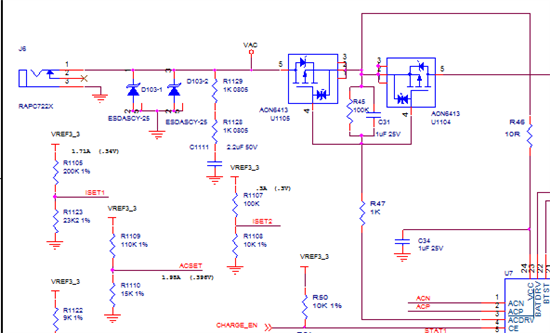We are using the BQ24610, and are using a design based on the reference design in the data sheet, after choosing our currents and voltages and such.
We are having two problems:
1) The BQ can detect when the charger is plugged in and will assert STAT1 appropriately. It however will not detect that the AC has been removed. When we look at the gave voltage of the ACFET combination, it drops the better part of 6 V, but not the full 6V the datasheet says. We are using the 100K across the G/S with the recommended capacitor, with a 1K to the ACDRV pin on the part. It seems in capable of shutting the FET off, like it is latching up. The part seems to think it is charging the battery from the battery (STAT1 stays asserted). If we then ground the gate of ACFET momentarily, then it shuts off as expected.
2) After having charged successfully once, I can no longer charge any cells. I see the HIDRV and LODRV strobing appropriately, but it is just not drawing any current.
Thanks for any help.



